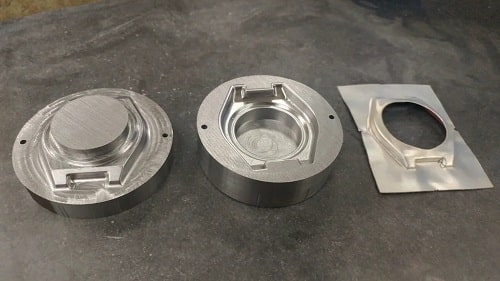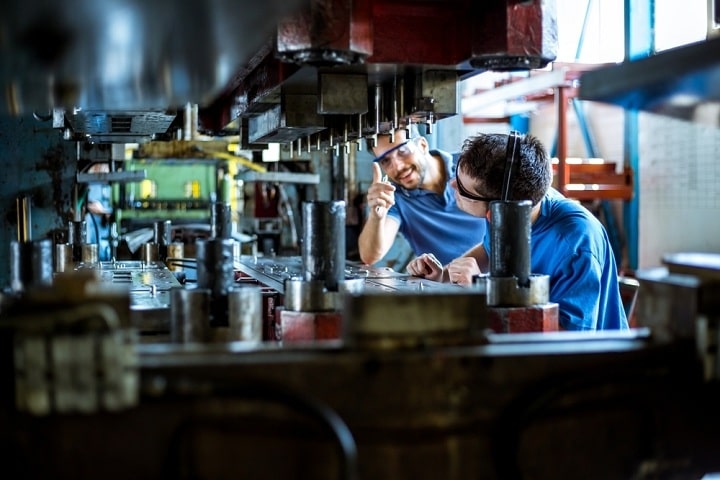Metal stamping involves utilizing machinery with dies to convert metal sheets into different shapes.
This increases the accuracy and quality of the metal. Metal stamping has transformed various sectors including automotive, industrial, construction, medical, fire protection among others.
The process is fully automated, meaning manufacturers can conduct speedy operations without incurring additional labor costs.
Projects that require high volumes of complex parts benefit a lot from this process as well. In this article, we will highlight the key benefits of hand transfer metal stamping in metal industry.
-
Cost
Cost is a key aspect of the manufacturing industry. The goal here is to produce high-quality items at a lower cost.
Metal stamping allows speedy production hence lessening the use of the machines, the number of workers, and the labor time.
This significantly reduces the production costs. We strongly recommend the use of metal stamping for industries that need to produce several bulky orders.
The savings are reflected in the cost of medical devices. Pharmaceutical companies can enjoy a high volume of items at a minimal cost.
-
Accuracy
Thanks to the detailed and sophisticated nature of this process, metals tend to achieve a high level of precision.
This could go as low as a micron level. When it comes to manufacturing medical devices, there is no room for errors. Patient safety is paramount and inaccuracies can have lethal consequences.
Stamping simulation technology can identify possible flaws before production progresses. In-die sensors and cameras, on the other hand, assist in the monitoring of critical dimensions, therefore, minimizing the margin for errors.
-
Flexibility
This is probably the most outstanding benefit of metal stamping. It allows all types of metals to be shaped in all manners of sizes and complex forms that were previously off-limits.
The sizes can range from tiny to minuscule parts. For instance, medical items like clamps, clips, and brackets are generally very tiny. Cutting edges of such components may require a certain degree of precision.
Likewise, surgical equipment that was previously challenging to process due to tight tolerances can now be processed. Read more here https://thebusinesstechies.com/key-benefits-of-transfer-press-stamping/.
-
Speed
As mentioned, this innovative technology ensures speedy production of complex parts including medical components. As such, most facilities benefit from quicker returns on investment.
Typically, the equipment produces thousands of strokes per minute. This naturally increases the volume of production and ensures pharmaceutical companies receive new devices without experiencing lengthy delays.
When compared to machining or traditional fabrication, metal stamping provides the lowest cycle time per part. Plus, the set-up time for die metal stamping is much less than that of any other type of machining.
-
Quality
Medical components demand a high level of quality to avoid product failure. Medical procedures like jaw housing and laparoscopic surgery are highly dependable on stamped parts.
Most of these parts are made of titanium which is known to resist corrosion and bacteria growth. Titanium is one hard metal but thanks to this Stamping technology, it can now be modified as easily as steel.
Generally, metal stamping has made the manufacturing of medical devices much easier by combining value, accuracy, and speed.

-
Production volume
The equipment operates within a vast range of services from low to high volume stamping. Plus, the speedy operation allows manufacturers to produce multiple items within a short period.
If you need thousands of medical equipment, you are most likely to achieve this with metal stamping. The high volume and quicker production make these machinery processes invaluable for companies in need of bulky pieces.
-
Process control
As mentioned, the entire stamping process is tightly controlled from the initial stage to the end.
The sensory and camera systems work actively to ensure everything runs smoothly and the end process is perfect. Click here
to read more insights.
Conclusion
Metal stamping is a key process in the manufacturing sector. Components made from metal stamping are sturdy and durable. Another great advantage of using this technology is the level of precision. The possibilities for errors are almost null thanks to the available camera systems and sensors which monitor the dimension in the entire process.
Stamped items exhibit a certain degree of quality that you cannot find in other traditional fabrications. Likewise, the process lessens the need to hire more engineers to do the job.so, you spend less on labor as well as machine operation.




































